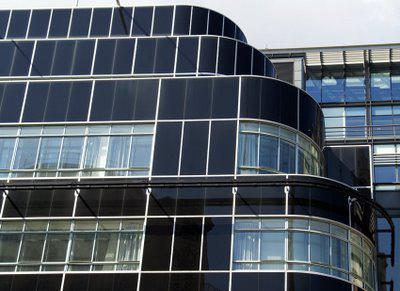 I had always thought of the Daily Express Building, a piece of black-and-silver Art Deco on Fleet Street, as a purely London landmark. However, thanks to a post on the excellent new Lost in Manchester blog, I discovered that it is in fact one of three (with the final 'triplet' in Glasgow).
I had always thought of the Daily Express Building, a piece of black-and-silver Art Deco on Fleet Street, as a purely London landmark. However, thanks to a post on the excellent new Lost in Manchester blog, I discovered that it is in fact one of three (with the final 'triplet' in Glasgow). London's version was built between 1930 and 1932 by architects Ellis & Clarke with Sir Owen Williams. He had trained as an engineer before moving to architecture and was responsible for buildings including Wembley Stadium and the Peckham Pioneer Health Centre. After the war, he would build the M1 motorway.
London's version was built between 1930 and 1932 by architects Ellis & Clarke with Sir Owen Williams. He had trained as an engineer before moving to architecture and was responsible for buildings including Wembley Stadium and the Peckham Pioneer Health Centre. After the war, he would build the M1 motorway.The structure is concrete, with the basement originally holding the printing press and the journalists working on the upper floors. Lord Beaverbrook liked the fact that the glass curtain walls meant Londoners could see his journalists working into the night.
The exterior is a mixture of chromium, clear glass and blackVitrolite. Pilkington manufactured this pigmented glass in a range of colours; it was used for interior tiling as well as external facades. Peer through the gaps in the curtains and you might be able to see the reliefs and exuberant Deco flourishes in the lobby.
When new, the Express building was supposed to be 'Britain's most modern building for Britain's most modern newspaper'. However, it was parodied by Evelyn Waugh in Scoop and later nicknamed the Black Lubyanka.
The Manchester and Glasgow buildings are by the same architect (Glasgow was built in 1937 and Manchester in 1939) and have similar chrome, glass and vitrolite facades. None of the three are homes to the Daily Express any longer. The newspaper left Fleet Street in 1989; the building was subsequently restored to its current splendour and is now occupied by Goldman Sachs.


